Three experts reviewed nervous system manifestations of Sjögren’s syndrome, such as dysautonomia and migraines, as well as practical management strategies, in Challenging Complications of the Nervous System in Sjögren’s Syndrome. The session is available on demand for registered ACR Convergence 2023 participants through October 31, 2024, on the meeting website.

Brent P. Goodman, MD, Neurologist at the Mayo Clinic, discussed evaluating dysautonomia in Sjögren’s syndrome. While dysautonomia is common in Sjögren’s syndrome, he said, it is under-recognized, and the underlying immunologic mechanisms are poorly understood.
Different autonomic nervous systems (ANS) may be affected, including adrenergic, gastrointestinal, genitourinary, thermoregulatory, secretomotor, and pupillary systems. Some of the possible underlying mechanisms include orthostatic hypotension, postural tachycardia, hyperadrenergic processes, and autonomic neuropathy. Importantly, ANS injury and maladaptive remodeling are possible, which may be the reason for persistent symptoms. The comorbid conditions that impact ANS include headache, sleep/mood disorders, pain, and mast cell pathway activation.
“I try to identify what autonomic systems are involved and what’s the severity of systems involvement. I try to determine what the mechanisms of the symptoms are, recognize comorbidities, and importantly, this then is my platform for treatment,” Dr. Goodman said.
Diagnostic tools may include patient history, examination, COMPASS 31-autonomic questionnaire, laboratory studies, autonomic testing, gastrointestinal motility testing, and urodynamic studies.

Arun D. Varadhachary, MD, PhD, Professor, Washington University, St. Louis, discussed the interplay of migraines and Sjögren’s syndrome, which also is not well understood. However, the categories of headaches that may have a pathogenic link to Sjögren’s include nonvascular intracranial disorders; disorders of the head, ears, eyes, nose, oral, and throat (HEENT) structures; and disorders of homeostasis, he said.
Insights into the pathogenic link come from 20 years of data on calcitonin gene-related peptide (CGRP). CGRP is proposed to have a role in amplifying headaches by integrating central and peripheral nervous system structures. In pathologic conditions, increased CGRP may sensitize the brain to respond to benign signals, resulting in a migraine phenotype.
“Are Sjögren’s patients susceptible to activation of the trigeminovascular system? The answer is we don’t know, but I think there’s lots of opportunities for us to think and ask questions,” Dr. Varadhachary said. “We certainly can think about the role of chronic inflammation and sensitizing peripheral nerves. We can certainly think about small-fiber injury as contributing to sending aberrant signals into the central nervous system. We certainly know about abnormalities in ears, nose, throat structures, and we can certainly discuss abnormalities in visceral sensation.”

Julius Birnbaum, MD, Professor, University of Pittsburgh Medical Center, discussed practical management strategies for neurological complications of Sjögren’s syndrome, many of which do not require immunosuppressive therapy.
“Immunosuppressive therapy is always required for large-fiber ganglionopathies and vasculitis, usually with axonal sensorimotor polyneuropathies with weakness, and you’ll almost never use immunosuppressive therapy for strokes, seizures, and you’ll avoid Sjögren’s demyelinating patients,” Dr. Birnbaum said.
He outlined how to integrate symptoms, examination findings, and diagnostic studies into a mechanistic-based treatment plan for three categories of peripheral nervous system diseases.
Patients with sensory polyneuropathies initially present with stocking-and-glove pain. As these are painful neuropathies, symptomatic treatment is usually required. Diagnostic tests include nerve conduction velocity (NCV) and electromyography (EMG) studies for large-fiber neuropathies, and skin biopsies for small-fiber neuropathies.
Patients with sensorimotor neuropathies initially present with neuropathic pain, symmetric weakness, and mononeuritis multiplex. Diagnostic tests include NCV/EMG and a nerve or muscle biopsy.
Patients with sensory ganglionopathies have a tremendous loss of position sense and neuropathic pain. Diagnostic tests include NCV studies for large-fiber ganglion neuropathies and skin biopsies for small-fiber neuropathies.
Register Today for ACR Convergence 2025

If you haven’t registered for ACR Convergence 2025, register today to participate in this year’s premier rheumatology experience, October 24–29 in Chicago. All registered participants receive on-demand access to scientific sessions after the meeting through October 31, 2026.
